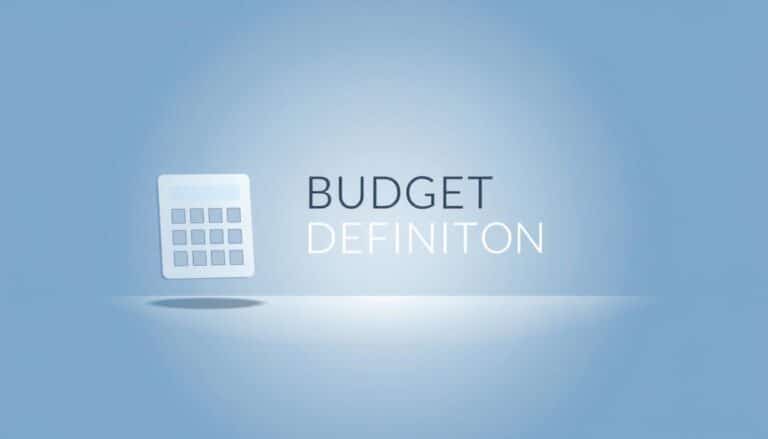Understanding compound interest can change how you plan your finances. It’s when interest earns interest, growing your savings fast. This snowball effect can make a big difference over time.
Starting early is key to get the most from compound interest. The sooner you save, the more your money grows. This can make a huge difference in the long run, helping you reach your financial goals.
Key Takeaways
- Compound interest can significantly grow one’s savings over time.
- Starting early is crucial to maximize its benefits.
- It is an essential strategy for achieving financial goals.
- The sooner one begins saving, the more time their money has to grow.
- Compound interest can lead to a substantial difference in the long run.
What is Compound Interest?
Related content:
You will stay on the same website.
Compound interest is when you earn interest on both the original amount and any interest that’s already been earned. It’s key to knowing how your money can grow over time.
Definition and Explanation
Compound interest is when interest is added to the original amount and all previous interest. It’s like earning interest on top of interest. This can make your investment or savings grow a lot.
Compound interest is different from simple interest. Simple interest only earns interest on the original amount. Compound interest is better for growing wealth over time.
Key Components of Compound Interest
Several things affect how well compound interest works:
- Principal Amount: The starting money you put in.
- Interest Rate: The rate at which you earn interest, shown as a percentage.
- Compounding Frequency: How often interest is added, like daily or yearly.
- Time: How long your money is invested or saved.
| Component | Description | Impact on Compound Interest |
|---|---|---|
| Principal Amount | The initial amount invested or deposited. | A bigger principal means more compound interest. |
| Interest Rate | The percentage rate at which interest is earned. | A higher rate means more compound interest. |
| Compounding Frequency | How often interest is compounded. | More often means more compound interest. |
| Time | The duration of the investment or deposit. | Longer time means more compound interest. |
Knowing these parts is key to getting the most from compound interest. By adjusting these, you can make smart choices about your investments and savings.
How Compound Interest Works
To fully understand compound interest, it’s key to know how it works. It’s calculated on the initial amount, plus all the interest from before. This leads to your investment or savings growing quickly over time.
The Formula for Compound Interest
The formula for compound interest is: A = P(1 + r/n)nt. Here’s what each part means:
- A = the total money after n years, including interest.
- P = the starting amount of money.
- r = the yearly interest rate (as a decimal).
- n = how many times interest is added each year.
- t = how long the money is invested for in years.
This formula helps you see how your savings or investments can grow. For example, investing $1,000 at a 5% annual rate, compounded yearly, will grow a lot after 10 years.
Frequency of Compounding
How often interest is compounded greatly affects the total amount. More often, the interest is calculated on a bigger principal, leading to more growth. For example, compounding every quarter or month can increase the total more than annual compounding.
Consider this: depositing $5,000 into a savings account with a 4% annual rate, compounded monthly, will earn more interest than if compounded yearly.
The Importance of Time in Compound Interest
In the world of compound interest, time is a key player. It can greatly influence how well an investment does. Compound interest works by adding interest on top of interest over time.
As time goes on, your investment grows faster. This is because the interest from earlier periods is used to earn more interest. This snowball effect is what makes compound interest so powerful.
How Time Affects Growth
The longer you invest, the bigger the impact of compound interest. Time has two main effects: it increases the number of times interest is compounded and gives more time for interest to grow.
Example: Alex and Ben are two investors. Alex starts with $1,000 at 5% interest at 25, while Ben starts at 35. By 65, Alex has more because of 10 extra years of compounding.
| Investor | Age Started | Total Years | Amount at 65 |
|---|---|---|---|
| Alex | 25 | 40 | $7,040 |
| Ben | 35 | 30 | $4,322 |
The Impact of Starting Early
Starting early is key because it gives compound interest more time to work. Even small, regular investments can grow a lot over time.
The key is to begin as early as possible and be patient. The sooner you start, the less you need to invest each month to meet your goals.
Understanding the role of time in compound interest helps investors make better choices. This way, they can reach their financial goals over the long term.
Compound Interest vs. Simple Interest
Compound interest and simple interest are two ways to grow your savings or investments. They work differently and are best for different financial needs.
Key Differences
The main difference is how interest is figured and added to your money.
- Simple Interest: It’s based only on the starting amount. The interest doesn’t grow, so it stays the same over time.
- Compound Interest: It’s based on the starting amount and all the interest that’s been added before. This means your interest can grow faster over time.
Where Each is Applicable
Knowing when to use each interest type is key to getting the most from your money.
| Characteristics | Simple Interest | Compound Interest |
|---|---|---|
| Calculation Basis | Only on Principal | On Principal and Accumulated Interest |
| Growth Rate | Linear | Exponential |
| Typical Use | Loans, certain types of savings accounts | Savings accounts, investments, retirement accounts |
By knowing the differences and uses of compound and simple interest, you can make better choices with your money.
Real-Life Applications of Compound Interest
Compound interest isn’t just a theory; it’s real and affects our money. It helps grow our wealth over time. This is thanks to compound interest in financial tools.
Compound interest is used in savings accounts, investments, and retirement plans. It’s powerful because it earns interest on both the original amount and any interest already earned.
Savings Accounts and Investment Vehicles
Savings accounts and investments use compound interest. For example, high-yield savings accounts grow your money over time. CDs and some bonds also use it.
Key benefits include:
- Earning interest on both the principal and accrued interest
- Potential for long-term wealth growth
- Diverse range of financial products that offer compound interest
Retirement Accounts
Retirement accounts like 401(k)s and IRAs also benefit from compound interest. Contributions can grow a lot over time. This makes starting early and saving regularly very important.
For instance, saving for retirement at 25 can lead to a big nest egg by retirement. This long-term perspective is key to making the most of compound interest.
The Rule of 72: A Quick Estimation Tool
The Rule of 72 is a simple way to guess how long it takes for an investment to double. It helps you see the power of compound interest.
Applying the Rule of 72
To use the Rule of 72, just divide 72 by your investment’s annual interest rate. For instance, with an 8% return, divide 72 by 8. This means your investment will double in about 9 years.
- Determine the annual interest rate of your investment.
- Divide 72 by the annual interest rate to find the number of years it will take for your investment to double.
Understanding the Limitations
The Rule of 72 is handy but has its downsides. It assumes a steady interest rate and ignores fees, taxes, and market changes. These can really impact your investment’s real performance.
Key considerations:
- The Rule of 72 works best for interest rates between 6% and 10%.
- It doesn’t consider how often interest is compounded.
- Real results can differ because of market and economic factors.
Knowing how to use the Rule of 72 and its limits helps investors make smarter choices. It shows the advantages of compound interest more clearly.
Examples of Compound Interest in Action
Let’s look at how compound interest works in real life. It can greatly affect both your savings and investments. This makes it very important for managing your money.
Demonstrating with a Savings Account
Imagine starting with $1,000 in a savings account. It earns 2% interest each year, compounded annually. This means the interest itself earns more interest, creating a snowball effect.
| Year | Principal | Interest | Balance |
|---|---|---|---|
| 1 | $1,000 | $20 | $1,020 |
| 2 | $1,020 | $20.40 | $1,040.40 |
| 5 | $1,082.40 | $21.65 | $1,104.05 |
This shows how compound interest can slowly grow your savings. You don’t need to add more money to see the growth.
Illustrating with Investments
Now, let’s look at investments. Say you put $5,000 into a mutual fund. It earns 7% interest each year, compounded monthly. This higher rate makes compound interest even more powerful.
- Year 1: $5,000 grows to $5,376.14
- Year 5: $5,000 grows to $7,041.91
- Year 10: $5,000 grows to $10,070.60
These examples show how compound interest can boost both your savings and investments. It’s a key way to grow your money over time.
The Power of Reinvestment
Reinvesting earnings is a smart move that boosts the advantages of compound interest. It puts the returns back into the investment. This way, people can tap into the full power of compounding, leading to big growth over time.
The idea of reinvestment is linked to the compound interest meaning. Here, the interest earned is put back into the investment to earn more interest. This creates a snowball effect, making the investment grow much faster than if it were just added to the original amount.
Compounding Returns
When returns are reinvested, they become the starting point for the next cycle of interest. This means the interest from the last period becomes the new base for the next. For example, if someone earns a 5% return on a $10,000 investment, the $500 earned is reinvested. This makes the new principal $10,500, ready for the next year’s interest.
Benefits of Reinvesting Earnings
Reinvesting earnings brings many benefits, including:
- It increases the growth rate of investments through compounding.
- It helps in building wealth over the long term.
- It makes it easier to reach financial goals, like saving for retirement or big purchases.
By understanding and using the power of reinvestment, investors can make smart choices. This helps them maximize their returns and reach their financial goals.
Common Misconceptions about Compound Interest
Compound interest is often misunderstood, leading to missed chances to grow wealth. Many people don’t see its true power. This can hurt their long-term financial health.
To clear up these misconceptions, it’s key to debunk myths and see the real growth potential of compound interest. Knowing this can help people make better financial choices.
Myths Debunked
One myth is that compound interest only helps with big investments. But, even small, steady investments can grow a lot over time because of compounding.
Another myth is that compound interest is the same as simple interest. But, compound interest grows both the principal and any interest already earned, leading to much faster growth.
| Interest Type | Calculation Basis | Growth Pattern |
|---|---|---|
| Simple Interest | Principal Amount Only | Linear |
| Compound Interest | Principal + Accrued Interest | Exponential |
Understanding True Growth Potential
The real strength of compound interest is in building wealth over time. Starting early and staying consistent can help achieve financial goals.
For example, reinvesting dividends or interest can boost compounding. This is very effective in long-term investments, like retirement accounts.
By understanding and using compound interest, people can make smarter choices with their money. This leads to better financial stability and success.
How to Maximize Compound Interest
By using a few simple strategies, you can greatly improve the benefits of compound interest. To do this, you need to make smart investment choices and understand how compound interest works.
Strategies for Investors
Investors can boost compound interest by starting early and sticking to their investment plans. A compound interest calculator is very helpful. It lets you see how your savings will grow over time.
- Start with a clear investment goal and choose an investment vehicle that aligns with it.
- Take advantage of accounts that offer compound interest, such as high-yield savings accounts or certificates of deposit.
- Consider the frequency of compounding when selecting an account, as more frequent compounding can lead to higher returns.
Another key strategy is to reinvest your earnings. This means putting the returns back into your original investment. It greatly increases the compounding effect.
Choosing the Right Accounts
The type of account you choose is very important for compound interest. Look for accounts with good interest rates and compounding frequencies that work for you.
| Account Type | Interest Rate | Compounding Frequency |
|---|---|---|
| High-Yield Savings Account | 2.0% | Daily |
| Certificate of Deposit | 2.5% | Monthly |
| Investment Account | Varies | Quarterly |
A compound interest calculator can help you compare different accounts. It helps you pick the one that will give you the best returns.
The Role of Interest Rates in Compounding
Interest rates are key in making compound interest work well in different financial tools. The rate at which interest is added can greatly change how much you earn.
Analyzing Different Rates
Different interest rates can lead to very different results with compound interest. For example, a higher interest rate can make the interest earned grow much faster. Let’s look at the compound interest formula: A = P(1 + r/n)^(nt), where A is the final amount, P is the starting amount, r is the yearly interest rate, n is how often interest is added per year, and t is how long the money is invested.
- A higher interest rate (r) can make the final amount (A) much bigger over time.
- How often interest is compounded (n) also affects the total amount earned.
To really get the compound interest meaning, we need to see how different rates change an investment’s growth. For example, a $1,000 investment with a 5% yearly interest rate compounded annually will grow to $1,628.89 in 10 years. But the same investment with a 7% yearly interest rate compounded annually will grow to $1,967.15 in the same time.
The Effect of Inflation on Returns
Inflation can reduce the value of the money you earn from compound interest. It’s important to look at the real rate of return, which is the nominal rate minus inflation. For example, if the nominal interest rate is 6% and inflation is 2%, the real rate of return is 4%. This shows how much your investment really grows in terms of what you can buy.
To get the most from compound interest, you should know the current inflation rates. Then, you can adjust your investment plans to keep up with or beat inflation. This might mean looking for investments that offer returns that match or beat the inflation rate.
- Keep an eye on inflation rates to see how they affect your investments.
- Think about using inflation-indexed financial tools to protect your earnings.
Compound Interest and Debt
Compound interest can grow your savings, but it can also hurt when you’re in debt. It’s important to know both sides to manage your money well.
The Darker Side of Compounding
Compound interest works against you when you borrow money. High-interest loans and credit cards can quickly grow out of control. For example, credit card debt can lead to a big increase in what you owe over time.
Example of Compound Interest on Debt: If you have a $2,000 credit card balance with a 20% annual interest rate, compounded monthly, the amount you owe can grow a lot in a year if not paid off.
| Month | Balance | Interest | Total |
|---|---|---|---|
| 1 | $2,000 | $33.33 | $2,033.33 |
| 6 | $2,033.33 | $34.44 | $2,210.19 |
| 12 | $2,210.19 | $36.84 | $2,439.87 |
Strategies to Manage Compounding Debt
To fight compounding debt, several strategies can help. Paying more than the minimum on high-interest loans can cut down the principal and interest. Also, moving debt to a lower-interest card or consolidating into a personal loan with a lower rate can be smart.
Debt Snowball Method: Another way is the debt snowball method. This means paying off the smallest debt first while making minimum payments on others. It gives quick wins as you clear smaller debts.
Knowing how compound interest affects debt and using good strategies can help you take back control of your finances.
Tools and Resources for Calculating Compound Interest
Modern online calculators and mobile apps make calculating compound interest easy. They help people make smart financial choices by showing what their money might grow to. This is useful for both investments and savings.
Online Calculators
Many financial websites have online compound interest calculators. They make it simple to figure out what your money could be worth in the future. Just enter the starting amount, interest rate, how often it’s compounded, and how long you plan to save or invest.
Key Features of Online Calculators:
- They are easy to use with simple fields to fill in.
- You can compare different scenarios to see what works best.
- They give you instant results.
Financial expert,
“Using online calculators can significantly enhance one’s understanding of how compound interest works, allowing for more effective financial planning.”
| Feature | Basic Calculator | Advanced Calculator |
|---|---|---|
| Input Options | Principal, Rate, Time | Principal, Rate, Time, Compounding Frequency |
| Output | Future Value | Future Value, Total Interest, Detailed Breakdown |
Mobile Apps for Tracking Compounding
Mobile apps also help track compound interest. They let you check your progress anytime, anywhere. These apps often have features like setting savings goals and sending reminders.
Popular Mobile Apps:
- App1: Known for its user-friendly interface
- App2: Offers detailed analytics and reporting
Using these tools and resources helps people understand compound interest better. This knowledge leads to smarter financial choices.
Teaching Children About Compound Interest
Teaching kids about money is key. Explaining compound interest helps them see the value of saving and investing early.
Financial Literacy for Young Savers
Financial literacy is vital for kids. It helps them make smart money choices. Understanding compound interest is a big part of this.
Explaining compound interest can be simple. For example, saving $100 at a 5% interest rate can grow over time.
Engaging Methods to Explain Concepts
Interactive tools and visual aids can help kids grasp complex money ideas.
Real-life scenarios or games can make learning about compound interest fun and easy.
| Year | Initial Amount | Interest Rate | Balance |
|---|---|---|---|
| 1 | $100 | 5% | $105 |
| 2 | $105 | 5% | $110.25 |
| 3 | $110.25 | 5% | $115.76 |

By teaching kids about compound interest, we give them the power to make wise financial choices. These choices can benefit them for years to come.
Conclusion: The Long-Term Benefits of Compound Interest
Understanding compound interest is key to smart savings and investments. Knowing how it works helps see the potential for growth over time.
Being consistent and patient are crucial. Regular investments and a long-term view can lead to big returns.
Practical Steps for Financial Planning
To get the most from compound interest, start early and stay consistent. Using the compound interest formula helps plan better.
Applying compound interest principles leads to a strong financial plan. This plan helps reach long-term goals, securing financial stability and success.



